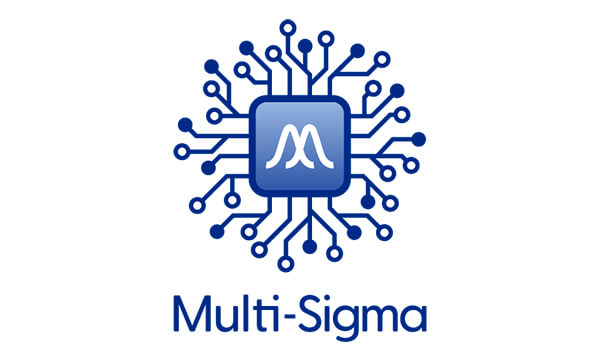Multi-Sigma development story

Motivation for Multi-Sigma development
Thank you for reading this blog. Today, I’d like to share with you the motivation behind my development of Multi-Sigma.
For 18 years, from 2005 until September 2023, I conducted research at one of Japan’s largest national research institutions, the National Institute of Advanced Industrial Science and Technology (AIST). At AIST, my focus primarily revolved around data science research. However, before joining AIST, during my doctoral studies at university, I was deeply immersed in experimental research.
During that time, I conducted research using a massive plasma device. Inside this device, the temperature reached around 10,000 K (0°C ≈ 273 K). My research focused on creating nanoparticles of titanium dioxide, a photocatalyst, for air purification within this device.

I faced significant challenges during these experiments.
Firstly, conducting these experiments incurred substantial costs and time constraints, limiting the number of trials I could perform. The device was exceedingly complex and large. For instance, it took over an hour to achieve the necessary vacuum pressure before each experiment, and cleaning the device after experiments required a considerable amount of time. Various tasks associated with the experiments often consumed half a day or even an entire day to complete. Moreover, due to the extreme conditions within the device, components frequently malfunctioned. If a quartz tube inside the device broke, replacing it resulted in significant costs, as these were custom-made parts. Additionally, it could take several months from ordering to delivery, causing further delays.
Secondly, this experiment involved numerous parameter conditions. To operate this device, seven parameters including pressure, power, and gas flow rate needed to be controlled. If these various parameters weren’t adjusted properly, plasma wouldn’t be generated, and nanoparticles wouldn’t form correctly. For instance, considering 10 conditions for each parameter, there would be 10^x combinations for x parameters. In the case of this device with seven parameters, there would be 10^7 combinations (10 million combinations). It’s clear that conducting experiments for all combinations of conditions using this device would be impossible.
Lastly, due to the three objectives of this experiment, finding the optimal conditions is exceedingly challenging. When there are multiple objective variables, it’s common for these variables to be in a trade-off relationship (improving one objective variable tends to worsen another). In such case, there wasn’t a single optimal solution that would satisfy all objectives simultaneously, making it difficult for human cognitive abilities to explore the optimal conditions.
In summary, my challenge at that time was how to efficiently explore the optimal conditions of a multi-input, multi-objective system with numerous conditions and objectives, using as few experiments as possible.
I remember being told by a professor at a certain university, “A good experimenter meticulously takes data to the point where the lines between plots become indistinguishable.” However, conducting experiments in such a manner left me feeling overwhelmed and uncertain of ever completing my studies. Traditional experiments typically involve varying only one parameter while keeping others fixed, aiming to grasp trends for each parameter.
At that time, I strongly felt the inefficiency of such human trial and error processes. Therefore, during my second year of doctoral studies, I began to contemplate methods for efficiently exploring the optimal conditions of multi-input, multi-objective systems by combining experimental design techniques with AI methodologies. This was over 20 years ago.
I believe that research and development in the field of engineering ultimately boil down to the activity of searching for the optimal combination of conditions for a given purpose. Therefore, I saw developing a solution to the challenges I faced at that time as potentially benefiting others as well. This realization served as the opportunity to develop Multi-Sigma.
機械学習を使った分析や予測が日常的に行われる今、協調フレームとしてのMulti-Sigma®の役割は増すばかりです。
『どのような場面で活用できるのか』をもっと知りたい方や、実際の利用シーンを見てみたい方は、是非一度お気軽にご相談ください。
In a world where machine learning-based analysis and prediction are becoming everyday practices, the role of Multi-Sigma® as a collaborative framework is more crucial than ever.
If you're interested in learning more about how it can be applied or want to see real-world examples, feel free to contact us.






